Burgundy hair color: shade options, dye selection and care

In a wide palette of red, the shade of burgundy, perhaps, attracts the attention of others the most. In addition to creating an unusual image, it also makes the curls more lively and radiant.

Peculiarities
The color of burgundy got its name in honor of the fine wine produced in the French province of Burgundy. The pluses of the burgundy color include the presence of a large number of undertones, which makes it possible to create the most natural image for the owner of any color type. The main disadvantage of the shade is called its rapid washout, as a result of which the image immediately becomes sloppy.
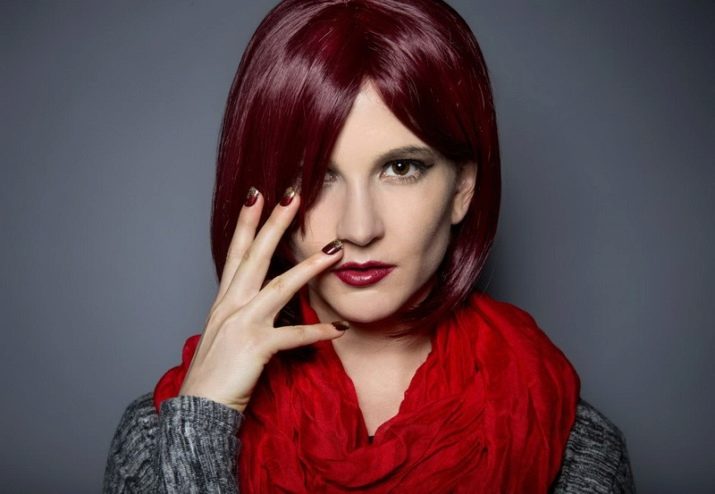


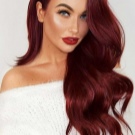

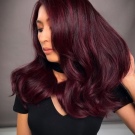
Regular tinting of strands becomes in this case not a simple recommendation, but a necessity.
Varieties of tones
The shades of burgundy are not so numerous, but they all look bright and attractive.
Classic burgundy is an intermediate shade between red and wine with a slight plum undertone. This shade is rather dark and non-flashy, and therefore looks organic in any look. Its final color may vary slightly depending on the base, that is, the natural hair color.
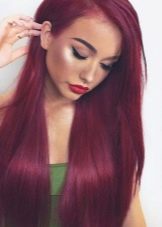
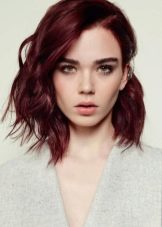
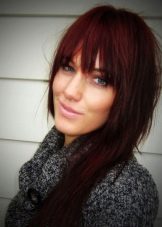
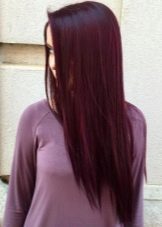
The refined shade of mulled wine, as you might guess, matches the color of the drink of the same name and has a copper undertone. This shade is very cozy and, one might say, autumnal.
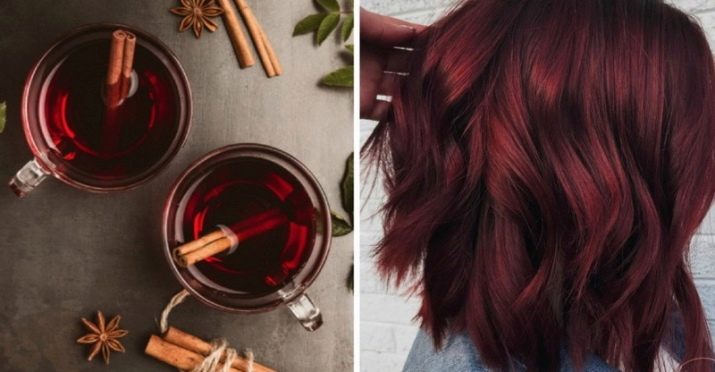
The shade of eggplant looks good on girls with a cold color type. In tone, it is something intermediate between purple and blue.The most advantageous eggplant looks on condition of snow-white skin and dark eyes.
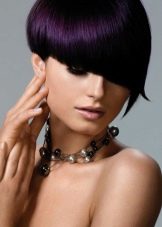
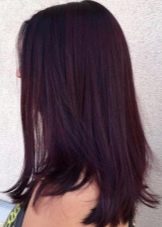
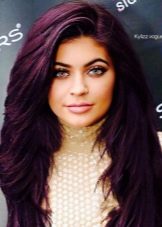

An unusual shade of pop burgundy is intermediate between red ombre and classic burgundy. Using a red subtone refreshes the shade and makes it look more winning. Pop burgundy is quite often used for both full coloring and partial coloring.
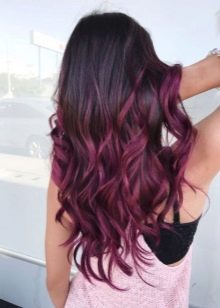
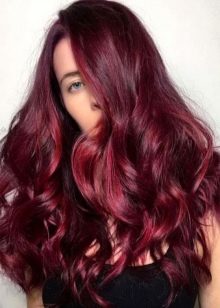

A mixture of eggplant and cherry burgundy creates a rich purple hue, almost close to black. This tone turns out to be very deep and looks amazing. In addition, burgundy can have a brown undertone and be close to the color of chestnut or cinnamon. The lavender undertone gives a purple variation, but lighter.
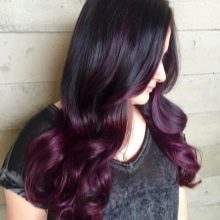
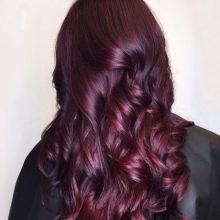
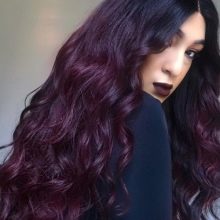
Who is it for?
Burgundy color suits the representatives of "cold" types. Light skin and the same eye color are more combined with bright curls, so the face immediately begins to look brighter and more sophisticated. Burgundy goes to the owners of chestnut, dark blond, red strands, as well as brown-haired women.
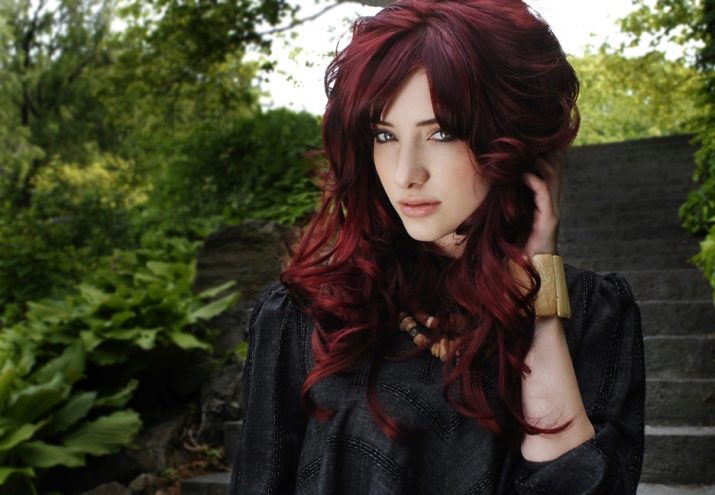
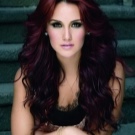
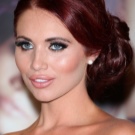


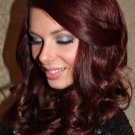
However, there is also a strict rule that applies even in the case of the correct color type. Burgundy should not be used when the skin is problematic, with pimples, and prone to redness and inflammation. You should also not make such a choice for ladies whose age has exceeded 35 years old, since reddish shades add extra age.
How to choose a coloring agent?
In order for home staining to give the desired result, you must first purchase a high-quality dye. To change hair in burgundy color, persistent dyes, tinting agents and some natural ingredients are used. Dye brand Estel shade "Burgundy" is one of the most popular. The natural ingredients contained in the composition provide a mild effect and do not damage hair. At the Palette brand in the line there is a shade "Eggplant", which provides a bright and rich color.
The presence of keratin among the components is responsible for the appearance of a healthy shine in the hair. Brand Londa can offer customers the shade "Burgundy", which is distinguished by ease of use and uniformity of color. It is necessary to withstand the coloring agent on the hair from 30 to 40 minutes for the appearance of persistent pigment.
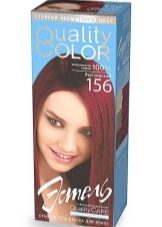
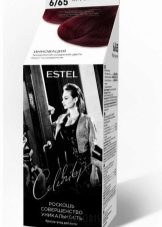
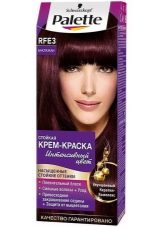
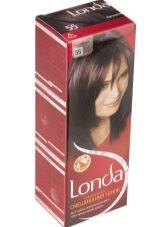
However, you should be prepared that in some situations the final color turns out to be different from the planned one.
- We are talking about a natural blonde, which, during the first dyeing, can become too bright or even unnatural.
- A similar situation occurs with overdried, damaged or porous strands. In this case, the wrong color does not wash out for a very long time.
- The dye does not always manifest itself correctly if the curls have already been dyed before. The desired shade will be in the root zone, but along the entire length of the strand it will be dirty and indistinct. Moreover, discolored strands can even become covered with ugly spots.
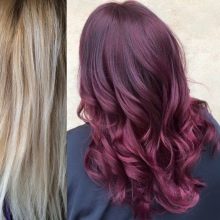
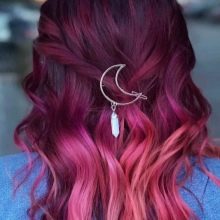
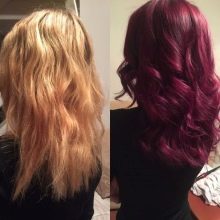
As for tinting agents, they give the necessary shade, but for a much shorter period than persistent dyes. Brand "Artual" has a burgundy shade in the line, which, although it looks persistent, is washed off after one or two washes of the head. At the balm "Tonic" the burgundy color is called "Indian Summer". The color is not very saturated and disappears after just one time. The brand Irida in the line there is a shade "Burgundy", which not only gives the required color and shine, but also has a beneficial effect on the condition of the hair. Washing takes place after about 2 shampoos.

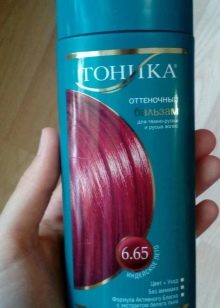
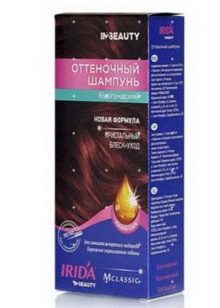
In general, most of the funds for toning burgundy shades are washed off in a couple of times, although the color lingers on spoiled curls for a longer period. The darker the hair, the less noticeable the burgundy color.
All natural ingredients, unlike purchased dyes, are applied to already washed hair without the use of conditioner, balm or mask. After completing the painting, you will have to spend 3 days without washing your hair, otherwise all actions will be in vain. A mixture of natural ingredients should be applied in a slightly cooled state, so as not to provoke a scalp burn. In addition, despite all the safety of the products used, they should not be applied to the strands after a perm or similar traumatic procedures, otherwise the result may be unpredictable.



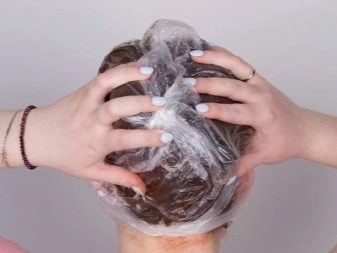
In order for henna to give a burgundy shade, and not the usual reddish color, it must be mixed with certain products, for example, beet juice or wine. To treat medium-length hair, you need one bag of henna, and for long curls, you will need a couple. In the first case, slightly warmed up beet juice is mixed with henna until a homogeneous, rather thick, lump-free substance appears. The dye is distributed along the entire length of the strands, after which the head is wrapped in a plastic bag and a warm towel. After 1 hour, the hair is washed under the tap.
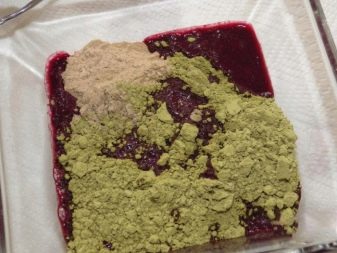
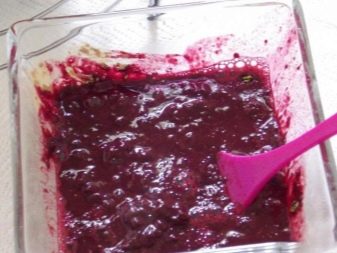
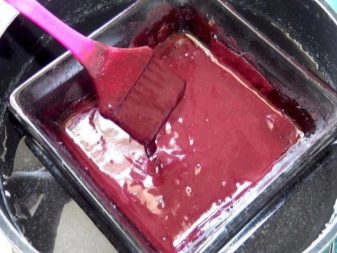
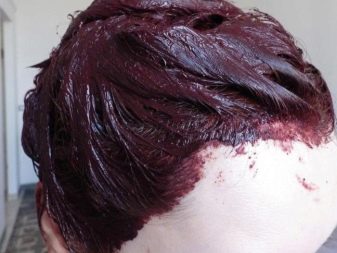
In some cases, the mixture is left on the head and for a longer period - up to 6 hoursand the beet juice is replaced by hibiscus tea. The preparation of the wine mixture is, in principle, carried out according to a similar algorithm. The warmed wine is mixed with henna, and then the substance is left to infuse for 3 hours. Next, the dye is distributed over the curls. After an hour, the curls can be rinsed with warm, but not hot water.
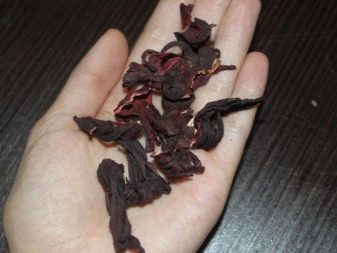
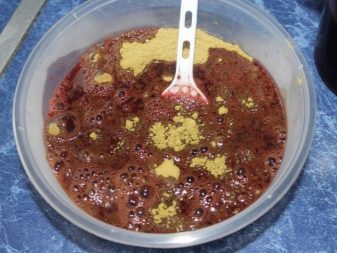
For dark variations of the burgundy hue, it is allowed to use cocoa. In the first case, cocoa is mixed with henna, diluted with cranberry juice and applied to the hair for about 1 hour. In the second case, a mixture of cocoa and ground cloves is poured into hibiscus and also applied for an hour. The head is washed under running water. Dry ingredients are used in a 1 to 1 ratio.
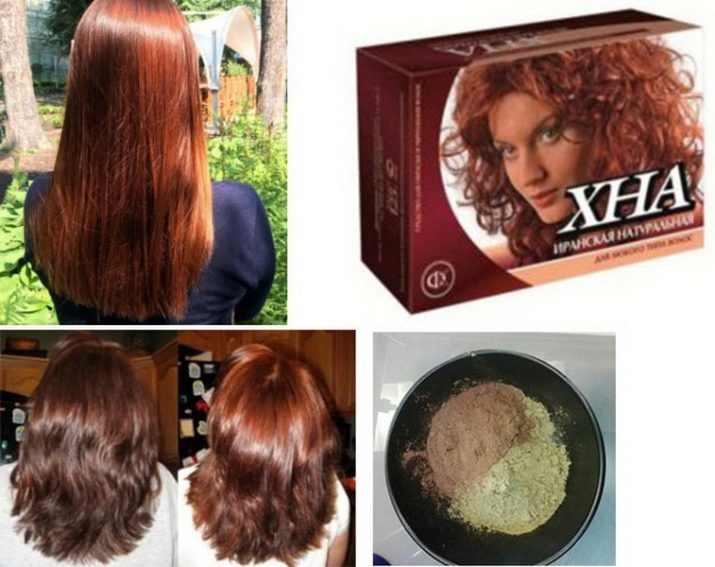
Coloring recommendations
When dyeing is done at home, it is important to study the instructions, and also make sure that the amount of dye does not run out at the most important moment. Experts recommend immediately purchasing two packs if the length of the curls is below the shoulders, or if they themselves have a rigid structure. The long-lasting product is applied to dry hair. Before using the paint, you should check if there is an allergic reaction. To do this, a small amount of paint is applied to the wrist or the inner side of the elbow for a couple of hours. If the result does not result in any red spots, itching or burning, then everything is in order.
The distribution of the coloring substance over the head begins from the back of the head. It is important to treat the roots first, and then distribute the residues through the hair. The tool is left for the amount of time stated in the instructions. Next, the shovel is washed with a large amount of running water, and the balm in the package is used.

Hair dyeing in the salon does not require following the instructions, but you will have to pay an amount starting from 1 thousand rubles for it. The final price tag will be determined depending on the length of the hair, the complexity of the procedure and other factors.
How to care for strands after the procedure?
Hair dyed in a burgundy shade requires special care, since the unstable pigment is washed out rather quickly. To prevent the hair from becoming dull and lifeless, all care products should be replaced with those that have the mark “for colored hair”. It is better to take a sulfate-free shampoo, since there is no component in its composition that helps to wash out the color. Masks and balms will have to be used in smaller quantities, as they still discolor the pigment a little. It makes sense to use means that fix the shade, for example, serums and sprays.
In the summer, when going outside, you will have to protect the curls with a headdress or special means containing components that prevent the effects of ultraviolet radiation.In winter, one should also not forget about frost protection.

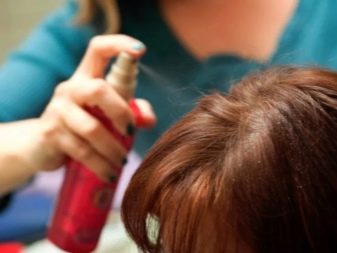
Testing colorista L'oreal staining balsams in burgundy and paprika colors, see the following video.








